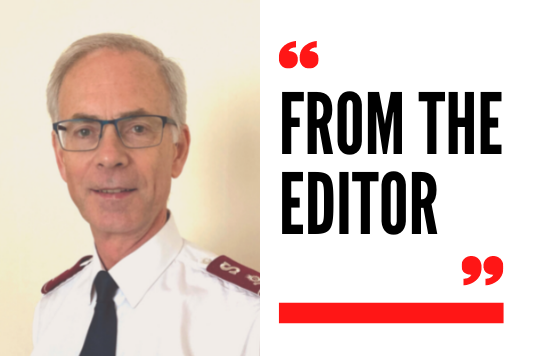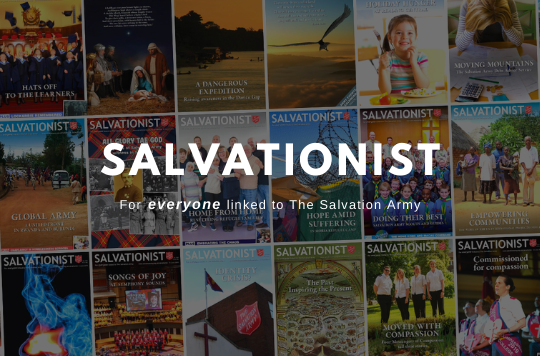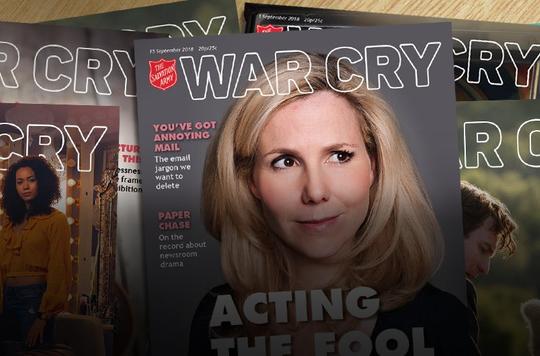Article of the week: Learning to do right
11 July 2020
VIEWPOINT
Linbert Spencer (Bedford Congress Hall) responds to the territorial leaders’ statement on racism and suggests steps we can take to implement it
AS well as being in lockdown because of Covid-19, we live in times when the very air is seemingly filled with anguished cries about racism, injustice and exclusion, and with accusations of institutional discrimination. Virtually every day during June we saw public statements from reputable bodies, including The Salvation Army’s United Kingdom Territory with the Republic of Ireland.
It can feel a little overwhelming. I’m sure that many people find it hard to understand such concepts as institutional discrimination and still others can’t quite believe that ‘racism infects the Church’ and that ‘this is true even in parts of Salvation Army life’ as stated by our territorial leaders (Salvationist 13 June).
So, what is institutional discrimination? It occurs when the systems, procedures, culture and policies of an organisation discriminate – wittingly or unwittingly – against a group or groups of people by treating them less favourably than it does others.
There was a recent example of this – unwitting, I hope – in the Appointments List (Salvationist 20 June). The editorial policy is to publish officers and envoys alphabetically by their family name. One of the Anglo-Saxon cultural norms regarding marriage is for the woman to assume the family name of the man.There’s nothing problematic about those two things. However, implementing the policy in the context of the cultural norm resulted in at least two married couples being separated in the listing. They were unwittingly treated less favourably than other couples, which is institutional discrimination. No single individual caused the separation of the couples and there would certainly not have been a plan to do so, but the result is not what was intended.
As well as understanding what institutional discrimination is and how it can affect us, and therefore being more alert to how it might manifest in our corps or centres, there are two other things to define: diversity and inclusion. These are not the same. You can have one without the other and, in terms of ethnic diversity, that is frequently the case.
Diversity is simply difference, and we’re all different from each other in many ways: ability, accent, appearance, colour, disability, education, ethnicity, family background, gender, interests, language, nationality, parental status, sexual orientation, size, skills, wealth and so on. Inclusion, on the other hand, is something you feel – it’s not simply a case of being physically part of a group or present in the room.
Let me offer a couple of examples. My knowledge of the International Staff Band and International Staff Songsters suggests that they are really good examples of inclusion but poor examples of ethnic diversity. On the other hand, many of our workplaces – including THQ and some corps – are good examples of ethnic diversity, but many minority ethnic staff and worshippers do not always experience a feeling of inclusion. Being clear that diversity and inclusion are different things is vital if we’re to take action that brings about change.
In a recent sermon Major Matt Spencer (New Addington) quoted the prophet Isaiah: ‘Learn to do right; seek justice. Defend the oppressed’ (1:17). Major Matt then said: ‘Learn to do right. Doing the right thing is something we have to learn. It doesn’t always come naturally and learning is a lifelong journey. Things that might have seemed right to some in another day and age are viewed differently today. And we might have some catching up to do when it comes to learning what’s right and what’s not.’
With all these things in mind, how can we, as individuals in this Movement, whatever our role or status, begin to respond to our territorial leaders’ aim for the territory to ‘intentionally seek ways to confront and fight racism wherever it is found’? How can we ‘take positive action to ensure that our culture is increasingly one in which our members, employees, service users and officers, of majority and minority ethnic origin, feel included – that is, respected, valued, trusted, safe and have a sense of belonging’?
Here are some suggestions to make your corps, centre or workplace a more inclusive environment:
- Spend time listening to the stories of people you do not ordinarily talk to
- Check yourself every time you think someone is ‘less than you’ because you notice that they’re different from you
- Every time you experience an environment that isn’t inclusive, ask yourself and those in charge: What should we start to do now to change that?
Here are some suggestions to make all parts of your corps, centre or workplace more ethnically diverse. (Note: If they don’t feel included, they
won’t stay.)
- Be proactively available to the minority ethnic communities in your constituency
- Invite more minority ethnic members to take on positions of responsibility
- Invite an appropriate local organisation to work with you to organise events during Black History month – and thereafter
Major Matt went on to say in his sermon: ‘As followers of Christ we’re lifelong learners when it comes to doing right.’ The above suggestions are some steps we can take in that ongoing journey.

From the editor
An early look at the editor's comment

Salvationist
Salvationist is a weekly magazine for members and friends of The Salvation Army

The War Cry
The War Cry is packed with features, reviews, mouth-watering recipes, puzzles and more.